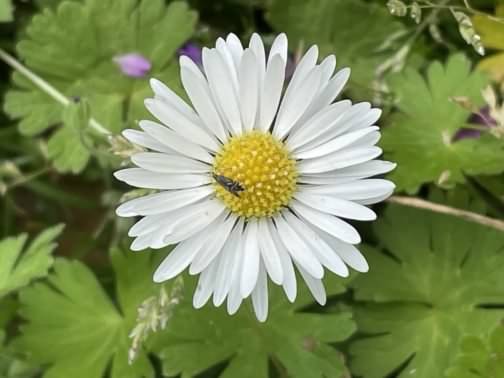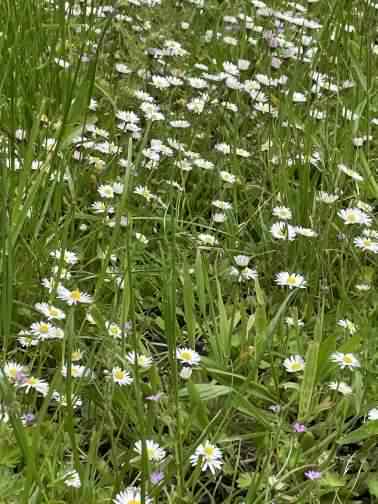
Photos ©2023
Click any photo for a larger image


Photos ©2023
Click any photo for a larger image

Common Daisy - Bellis perennis
Family - Compositae
Also known as - Lawn Daisy, Mary's Rose, English Daisy
A very common herbaceous perennial of lawns and grassland throughout the UK, Europe and western Asia, growing to a height of 10cm (4in) from a basal rosette. It is an introduced and naturalised weed species in the Americas and Australasia. Mostly seen as a weed of lawns, pasture and roadside verges, it also occurs on riverbanks, dune–slacks, and lake margins, it can be a valuable addition to grassland areas managed for wildflowers and wildlife. Spoon shaped leaves are obovate and toothed, growing flat to the ground. A single composite flower 2–3cm (0.7–1.3in) across per stem with a yellow button like centre of many individual florets and white ray petals sometimes tinged with red at the tips, are seen from March to November.
The Latin name is derived from "Bellis" for "pretty" and "perennis" for "everlasting", "Daisy" is thought to be a corruption of "days eye", referring to the flower closing overnight, however the Daisy usually needs bright sunlight to open fully. Some cultivated forms with large flowers.
FBCP do not advise or recommend that Daisy – Bellis perennis is eaten or used as an herbal remedy. Young leaves can be eaten raw in salads or cooked, the leaves become astringent with age. Flower buds and petals can be eaten raw in sandwiches, soups and salads. It is also used as a tea and as a vitamin supplement. Daisies have traditionally been used for making daisy chains in children's games.
Site design ©1999– Brickfields Country Park - Privacy -